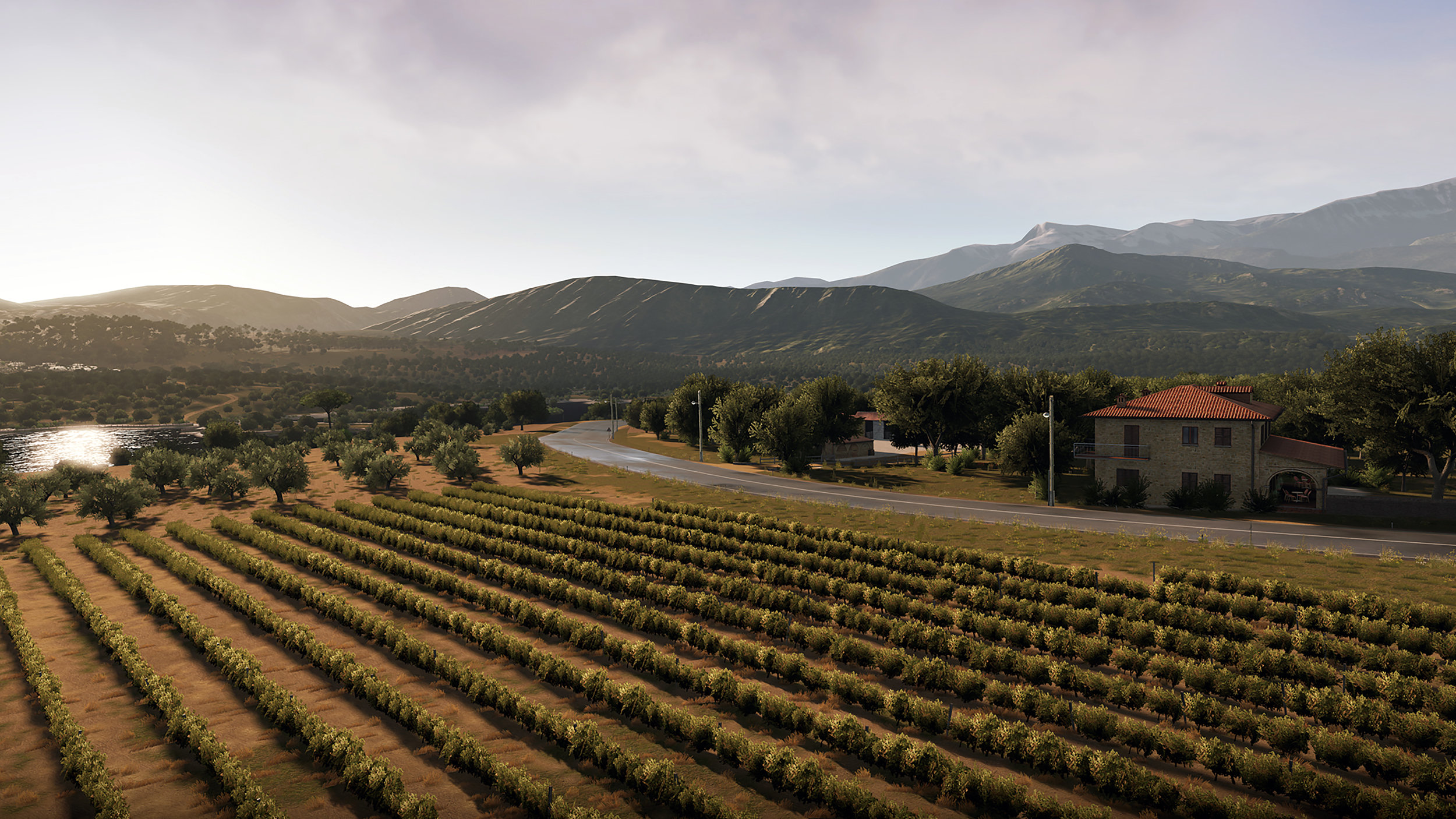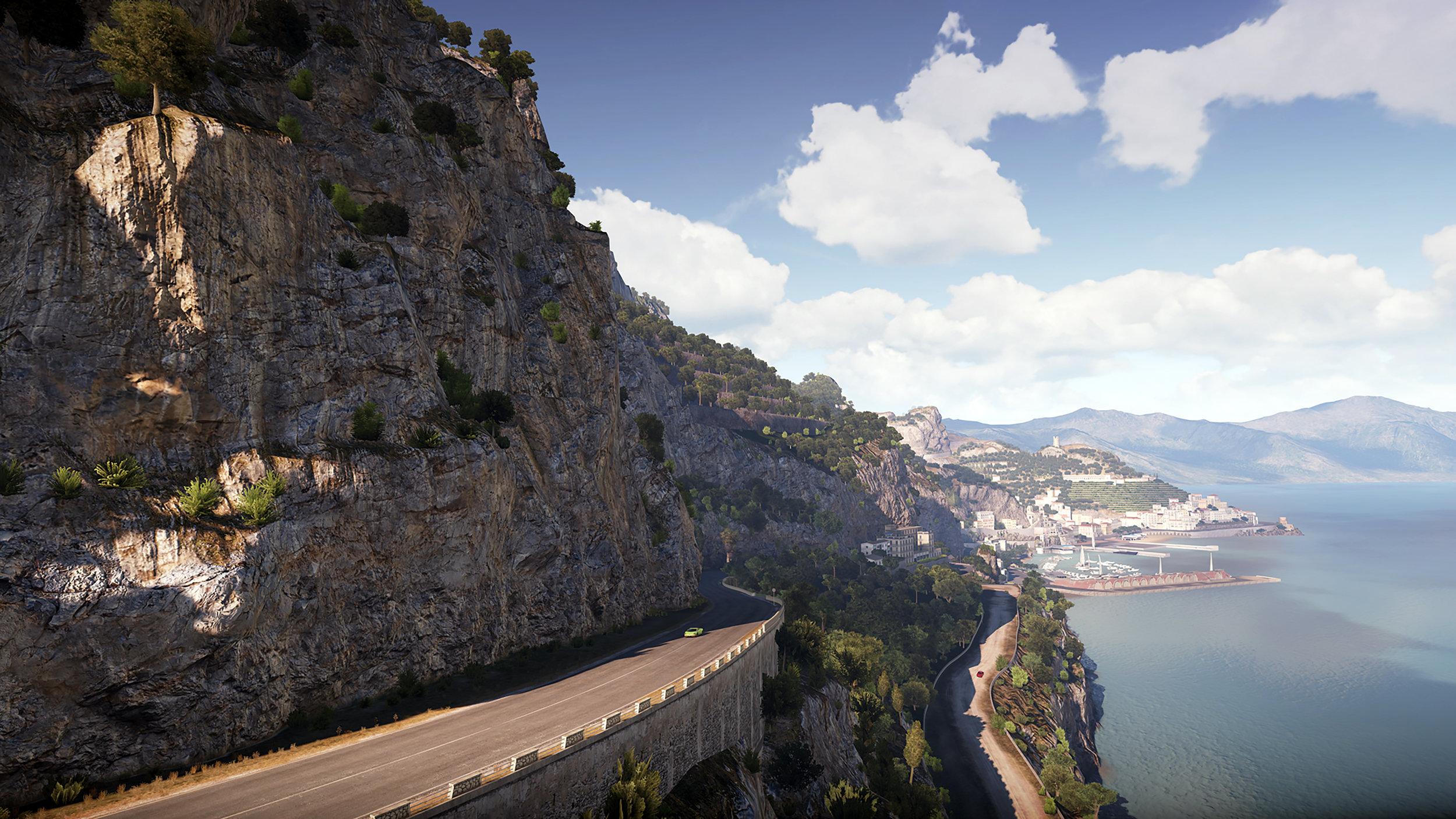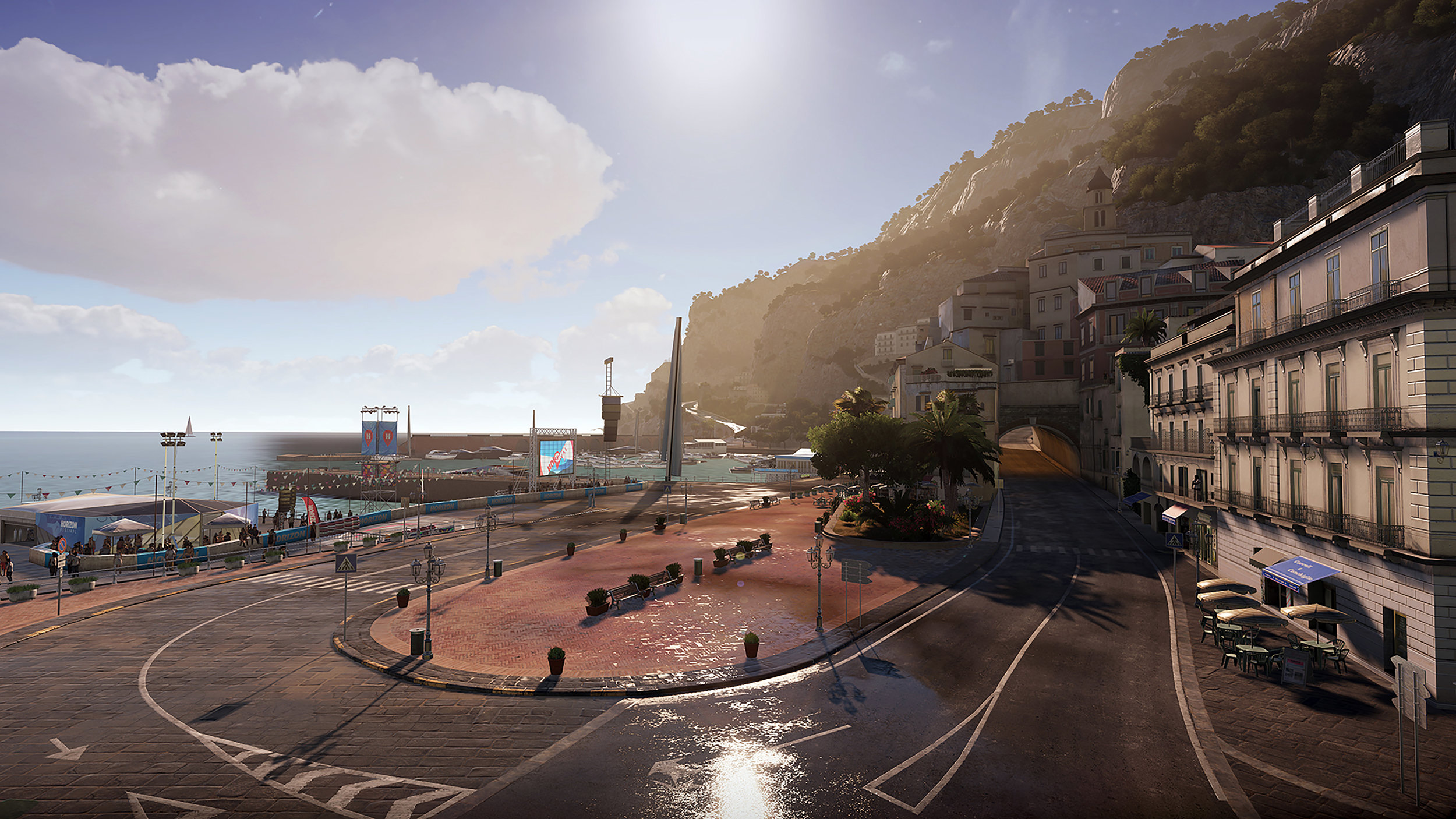BORING POSTCARDS FROM ITALY
by COLL.EO
Release date: December 8, 2016
Features: Hardcover, 134 pages, illustrations, full color.
Format: 10×8 inches, 25×20 cm
ISBN: 9781366753243
Price: $109.99
LIMITED EDITION: 99 copies
PURCHASE HERE
DESCRIPTION
English
To create Boring Postcards from Italy, COLL.EO has collected more than one hundred of the most boring images from Forza Horizon 2. The result is a book that, in sharp contrast to the title, fascinates and surprises. Boring Postcards from Italy redefines the relationship between reality and simulation with "postcards" that are "boring" both in content and composition. The project is an appropriation and homage to Martins Parr's seminal Boring Postcards series: a commentary on videogame architecture, tourism and simulation, photography and representation. It is, above all, a provocation. Text in English.
Italian
Per creare Boring Postcards from Italy, COLL.EO ha raccolto oltre un centinaio delle "cartoline" più noiose dell'Italia simulata in Forza Horizon 2. Il risultato è un libro che, in aperto contrasto con il titolo, affascina e sorprende. Questo volume illustrato rappresenta uno strumento essenziale per comprendere la complessa interazione tra gioco e fotografia, documentazione e simulazione, arte e design. Sono qui incluse immagini "noiose" a livello di contenuto, composizione e soggetto dell'Italia immaginata dai programmatori di Turn 10 Studios. Boring Postcards from Italy offre uno sguardo inedito sugli ultra-luoghi videoludici, illuminandone tanto l'architettura quanto la sottesa ideologia (nonché patologia). Frutto di una duplice appropriazione - il videogioco Forza Horizon 2, ma anche la serie Boring Postcards del fotografo britannico Martin Parr che il progetto omaggia a livello formale e contenutistico - il volume porta in primo piano la natura auto-referenziale dell'arte videoludica e, in particolare, della fotoludica, termine che indica le pratiche fotografiche all'interno dei videogiochi. Testo in inglese
THE AUTHORS
COLL.EO is a collaboration between Colleen Flaherty and Matteo Bittanti established in 2012. COLL.EO operates in San Francisco and Milan.
READ "CARTOLINE DAL BELPAESE" BY MATTEO BITTANTI (IN ITALIAN)
Language: English
TEASER
INTERVIEW
Random Parts is an artist collective located in Oakland, California In its current iteration, the group is a dynamic duo comprising Juan-Carlos Quintana and Colleen Flaherty. Established in 2013 with the support of Carlo Ricafort and Matteo Bittanti, Random Parts has been collaborating with Concrete Press on several projects. To celebrate the release of COLL.EO'S Boring Postcards from Italy, Random Parts spoke to Matteo Bittanti.
Random Parts (RP): What is Boring Postcards from Italy about?
Matteo Bittanti (MB): It's many different things at once. In a sense, it's the follow-up to several previous projects that we completed between in 2015 and 2016, including the machinima series THE FREGOLI DELUSIONS and INTERVALLO, the photography series POSTCARDS FROM ITALY, and the installation YOU'RE IN THE WONDERFUL COUNTRY. As an "object", i.e. a book, Boring Postcards from Italy is the third installment of my ongoing critical investigation of Forza Horizon 2. The previous "chapters" consist of Orizzonti di Forza and EXTRA MILES, both in published in Italian by Edizioni Unicopli and Concrete Press respectively. Unlike its predecessors, Boring Postcards from Italy is essentially a photo essay.
COLL.EO, Postcards from Italy, framed photograph, 4 x 6 inches, 2016 (Photo: Courtesy of COLL.EO)
RP: You stated that the Boring Postcards from Italy is both an appropriation and homage to Martin Parr. How so?
MB: Martin Parr is much more than a photographer: he is a brilliant conceptual artist. We love his Boring Postcards trilogy and we wanted to emulate the format and style of his books to create a photographic documentation of a video game without any introduction or commentary. We collected boring pictures of boring in-game photographs of boring virtual places in the Italian countryside, presumably for boring people to buy and send to their boring friends. Parr's books feature a grey, beige, and green cover. Ours is yellow. He used captions, we did not include any word of explanation, location or date. This lack of contextualization is deliberate and alludes to the game designers' decontextualization of Italy. As I argued in my previous books, Forza Horizon 2 is not really a racing game but a tourism simulation set in a sanitized, imaginary Italy that does not truly exist. We wanted to highlight the incongruities and inconsistencies of this virtual reality through an unconventional format, that is, an illustrated book. In our previous project POSTCARDS FROM ITALY, we turned a series of screenshots taken into the game into postcards, and we disseminated these artifacts on "real" postcards racks all over Italy. Our goal was to bring "the virtual" into "the real", suggesting some kind of equivalence between the two. We decided to go a step further by documenting our own experience within the game Forza Horizon 2 using our virtual automobile as a camera and using the Photo Mode editor to capture moments and situations that would have otherwise gone unnoticed. In 2009, Hito Steyerl wrote about the “poor image” (a “copy in motion” that a bad quality and substandard resolution, “an illicit fifth-generation bastard of an original image”). We, on the other hand, are obsessed with the slow image, that is, the image resulting from an unexpected deceleration, an image that is normatively meant to be experienced “fast" rather than frozen in time. Postcards are perhaps the slowest kind of images, because they are made of atoms rather than bits and they travel lentamente, via snail mail.
RP: Can you elaborate? By "incongruities and inconsistencies" you mean glitches and bugs?
MB: Yes, but also uncanny repetitions - for instance, the same characters appearing over and over again in the various spots throughout the game and recurring visual anomalies, e.g. plants and trees that take over bus stops, cars that appear to be flying over the asphalt, impossible perspectives, things like that... Racing games are meant to be experienced at very fast speed - they are, by all means, ludic exemplification of Paul Virilio's notion of dromology. When one plays the game at a very low speed, rejecting the designers' intentions, all sorts of interesting things begin to emerge. The race driver becomes an anthropologist of virtual spaces: armed with a camera, she captures the ephemeral and the transient. She documents a situation. Boring Postcards from Italy is the outcome of our investigation. We are interested in addressing the representational problems inherent in video game aesthetics.
COLL.EO, The Fregoli Delusions, 2016 (photo still from video, Courtesy of COLL.EO)
RP: Why are the "postcards" included in the book "boring"? Are there "exciting" postcards of virtual Italy? If so, where are they?
MB: Our "postcards" are boring both in terms of theme and composition. They are very different from the official images that the publisher circulates to promote the game. Consider the official screenshots used by Turn 10/Microsoft to represent the fictitious cities of Castelletto, San Giovanni, and Montellino:
These images are undoubtedly "spectacular". They remediate the logic of traditional postcards. They feature "impossible", a god-like, all-seeing-eye, omniscient views that require technical trickery and cannot be achieved by the average player/photographer. In contrast, the images included in the book highlight banal and trivial details, like a rusty guardrail, a brick wall or the unrealistic lack of trash on the side of the road. Additionally, the virtual Belpaese is a pastiche of several existing locations: a mixture of landscapes and towns located in Campania, Piedmont, Liguria, and Tuscany. This is the Italy as imagined by Hollywood, the quintessential "Postcard Italy" that does not exist. A drive through this ludic Italy produces cognitive dissonance in those familiar with the "real thing". This is what we call the video game pastoral style: idyllic and thus impossible, with no trash and garbage, potholes and graffiti, sex workers and strip malls. Italy has the highest share of elderly population (65 and over) compared to the total population in the European Union, and yet the video game only features teenagers and youngsters. In short, Boring Postcards from Italy deals with complex politics of representing space within a simulation: each photograph was shot with a deliberate unspectacular style. We are more interested in critical scrutiny than pure aesthetics. Boring Postcards from Italy represents a kind of experimental documentary photography in video games. We were inspired by Vilém Flusser notion of unspectacular revolutionaries that he advances in his book Into the Universe of Technical Images, written in the mid 1980s: "Contemporary revolutionaries are not actively opposed to the images themselves but rather to the integrated circuitry. They actively promote dialogical, rewired images. Contemporary revolutionaries are envisioners (photographers, filmmakers, video makers, computer programmers) grounded in the revolution in technical images. Their visionary powers are focused on a society in which people exchange information through images and, in so doing, constantly produce new information, improbable situations. Only as a result of this new capacity to visualize does it become possible to conceive of such a social formation. The revolutionaries want to change not only the underlying structure but the surface of the so-called information society." (p. 67). According to Flusser, entertainers deal with spectacular images while revolutionaries are deliberately unspectacular ("[T]hose who count as revolutionaries are really entertainers. They are spectacular, and the spectacle they present assists the images in dispersing us more and more effectively. The true revolutionaries, on the other hand, do not appear in the images", p. 66) We wanted our images to be completely unspectacular.
RP: Does Boring Postcards from Italy have a narrative? I noticed that the images are often mirrored and/or paired and some motifs recur throughout the book...
MB: Not exactly. Boring Postcards from Italy is more like a disassembled movie, a para-cinematic slideshow, an experimental graphic novel. There is no explicit story, although a reader may identify some themes, e.g. infrastructure, buildings, situations and also recurrent characters. Parr's postcards revolve around four main tropes: transport, civic pride, recreation and industry. Boring Postcards from Italy is not a "fotoromanzo" (photonovel, Ed.), although we were certainly aware of this form of vernacular production while working on the book. Jerome Bruner argues that we are naturally wired to see narratives in everything we encounter - we literally construct reality in narrative terms -, so perhaps there's indeed a story within Boring Postcards from Italy. Maybe readers will figure it out.
LINK: Boring Postcards from Italy















